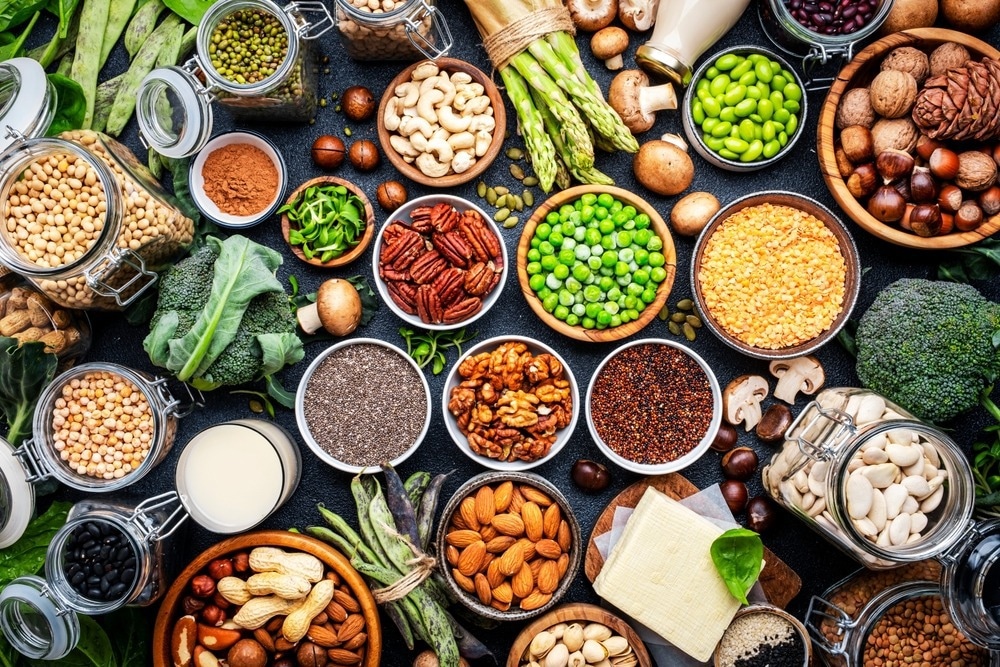A higher plant-to-animal dietary protein ratio is associated with lower risks of cardiovascular disease and coronary artery disease, but not stroke
A recent American Journal of Clinical Nutrition study conducted a prospective cohort study to assess the relationship between cardiovascular disease and dietary plant-to-animal protein ratio.
Dietary protein intake and the risk of cardiovascular disease
In the United States, cardiovascular disease (CVD) is one of the leading causes of death, and international clinical practice guidelines, such as Canada’s Food Guide and the EAT-Lancet Commission suggest replacing some animal protein in the diet with plant protein to lower the risk of CVD. Despite this, in developed countries, most protein is derived from animal sources. In the US, the ratio of plant-to-animal (P: A) protein ratio in the diet is approximately 1:3.
Research has not yet documented the optimal ratio of animal and plant protein intake in the diet for CVD prevention. The lack of evaluation of the optimal ratio has led to an absence of recommendations concerning the relative contribution from these sources of protein. Therefore, public health guidance on protein sources can be refined by assessing ratios of the plant-to-animal protein.
About the study
To address the above-mentioned gap in the literature, three large US prospective cohort studies were conducted to evaluate the relationship between different deciles of plant-to-animal protein and CVD, including dose-response relationships. Statistical substitution models were used to assess CVD risk by replacing the top animal protein sources with plant protein sources. This helped account for the fact that diets with the same plant-to-animal protein ratio could include different protein sources.
The three prospective cohort studies were the Nurses’ Health Study (NHS), NHSII, and Health Professionals Follow-up Study (HPFS). Hazard ratios (HRs) for CVD outcomes were estimated using multivariable-adjusted Cox proportional hazard models for 89,205 females in the NHSII (1991–2017), 70,918 females in the NHS (1984–2016), and 42,740 males from the HPFS (1986–2016). The percent energy from plant and animal protein was used to compute the P: A ratio. To determine the intake, a food frequency questionnaire (FFQ) was administered every 4 years.
CVD was defined as a composite of CAD, incident non-fatal myocardial infarction (MI), and fatal and non-fatal stroke. Death was confirmed by the National Death Index, relatives, or postal authorities. An array of covariates was considered, including medical history, family history, lifestyle, reproductive factors, medication use, and so on.
Study findings
During a 30-year follow-up, the median P: A ratio increased from about 0.36 to about 0.50. The cumulative average ratio ranged between 0.15 and 1.84, and, over the follow-up, the median calorie density from total protein remained consistent at around the 17%–19% range. As a percentage of total caloric intake, animal protein reduced from about 13% to about 11%, while the fraction of plant protein increased from about 5% to about 6%.
Overall, a lower risk of total CVD and CAD, but not stroke, was associated with a higher P: A ratio. The findings were insignificant for the NHSII cohort. The results were consistent in the pooled analyses, where a 1-standard deviation increase in the P: A ratio (~0.18) was associated with a lower risk of total CVD and CAD but not stroke. The findings for ischemic and hemorrhagic strokes were insignificant.
Concerning the dose dependence, a significant risk reduction was noted early in the dose-response curve, followed by more gradual reductions. For stroke, no evidence of linear or nonlinear associations was noted. When higher P: A ratios were combined with higher protein density, the inverse associations with CVD and CAD were stronger. The results were largely consistent in sensitivity and sub-group analyses. In a substitution analysis, when energy from plant protein was used to replace 3% energy from animal protein, a significant reduction in the risk of CVD (18%) and CAD (24%) was noted, but not for stroke.
It was not possible to determine the optimal P: A ratio for CVD risk reduction owing to the possible different dose-response relationships for stroke and CAD. However, it was noted that at around a P: A ratio of 0.5, the risk for both CVD and stroke started to plateau or potentially increase. The ratio could be 0.76 or higher for the prevention of CAD.
Conclusions
The results suggest that a higher P: A ratio protein ratio is associated with a lower risk of CVD and CAD, but not stroke. The findings also indicate that plant protein consumption coupled with higher protein density may offer additional benefits in terms of cardiovascular health.
In the future, more research is needed to pin down the optimal P: A ratio for the prevention of CVD. Studies should also be conducted in populations where the consumption of plant protein, in general, is higher to understand the optimal ratio for the prevention of CAD and stroke.
Source link : News-Medica

